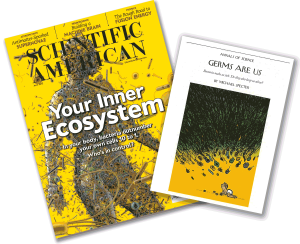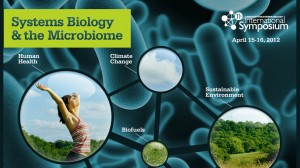ISB and the Microbiome
 isbscience.org/news/2012/12/10/isb-and-the-microbiome/
isbscience.org/news/2012/12/10/isb-and-the-microbiome/What You Saw in the News:
2012 was the year of the microbiome. Feature stories about the trillions of microbes found in our environment and on/in human bodies appeared in publications such as The Economist, the New York Times, The Scientist, The New Yorker, Wired, Scientific American, and Discover. The NIH’s Human Microbiome Project published a report in Nature. The Earth Microbiome Project held its first international conference, which took place in Shenzhen, China.

From Scientific American’s June 2012 issue:
“Bacterial cells in the body outnumber human cells by a factor of 10 to 1. Yet only recently have researchers begun to elucidate the beneficial roles these microbes play in fostering health. Some of these bacteria possess genes that encode for beneficial compounds that the body cannot make on its own. Other bacteria seem to train the body not to overreact to outside threats. Advances in computing and gene sequencing are allowing investigators to create a detailed catalogue of all the bacterial genes that make up this so-called microbiome.”
ISB’s Connection:
In April 2012, ISB held its 11th Annual International Symposium, which focused on systems biology and the microbiome. Our featured speakers, including scientists involved in the Human Microbiome Project, shared their research on the microbial world. Dr. Nitin Baliga, ISB’s Director for Integrative Biology, presented a talk on how understanding microbes on the molecular and systems level can help solve some human health and environmental problems.
Dr. Lee Hood, ISB’s president, also contributed an editorial to Science Magazine highlighting the importance of studying the microbiome. There are many questions: “What can individual microbes do? How do communities of microbes interact together to modify their environments? How can we redesign microbes and their communities to have them execute the chemistries that humans need to meet the grand challenges of society? Systems biology offers a powerful approach to framing and experimentally approaching such challenges.”







